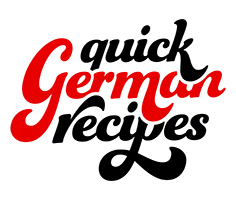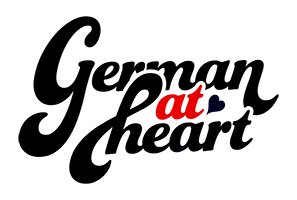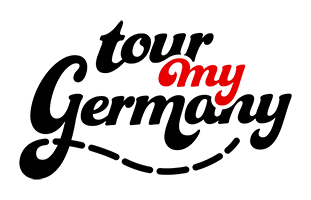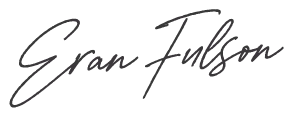Warm up this winter with Oma's newest cookbooks - available on Amazon >>
- Home
- Top German Cities To Visit
- Things to do in Cochem
Wine Country and the Mosel Valley: The Best Things to do in Cochem
By: Eran Fulson / Traveler, writer, and curious observer of all things German.
Nestled in the Mosel Valley and away from the hustle of Cologne and Frankfurt lies one of Germany’s most gorgeous towns: Cochem. Situated in the Rhineland-Palatinate, Cochem is surrounded by nationally envied vineyards and largely considered to be one of the prettiest villages along the Mosel.
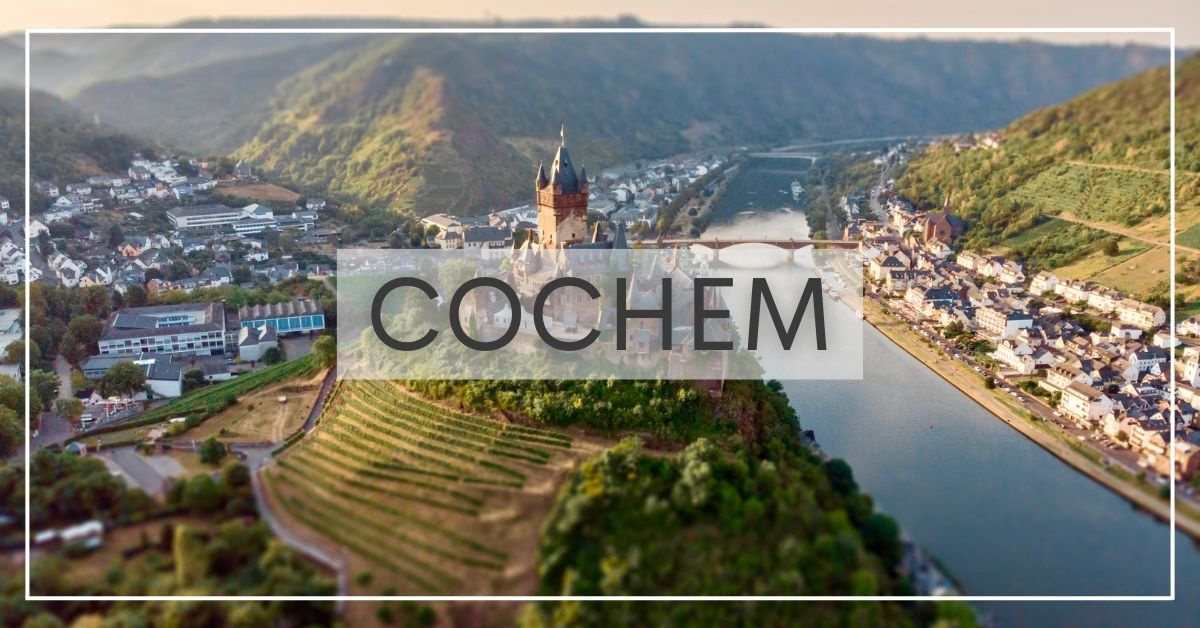
On this page:
Depending on your tastes, there are still plenty of things to do in Cochem even if wine isn’t at the top of your list. Few others can compare to its rustic charm and idyllic half-timbered houses stretching along the banks of the Mosel River.
Little is known about the town of Cochem before 866 where it is mentioned in a document from the Abbey of Prüm. The local monastery had a number of properties donated to it by a noble matron, Hieldidla, including a manor house “in villa cuchema”.
Fast-forward to the Roman discovering that the valleys surrounding Cochem were ideal for cultivating grapes for wine. Because of the steep slopes, the grapes are bathed in sunlight far longer than flat vineyards, which results in a distinctive production of wine only the little village of Cochem offers.
Town rights were given to Cochem in 1332 and town fortifications were soon established. Life was typical for the time during the next three hundred years.
Ebbs and flows were common, but on the whole, Cochem established itself as a desirable town to outside nobility. Then came Louis XIV and the French army during the Thirty Years War.
Destruction and poverty laid waste to Cochem and reconstruction was slow. When the 18th century came around, the town was establishing itself as a prosperous center of commerce. Its location along the river offered access to ships delivering and collecting goods, and soon, Cochem was firmly on the map.
Getting There
This is going to be one of the few times, if ever, that I’ll recommend arriving by boat. Numerous river cruise ships that travel along the Mosel River pull ashore in Cochem making this an ideal day trip stopover.
If you prefer to travel by more traditional means, the closest airport to Cochem is Hahn (HHN) though more convenient will be Frankfurt (FRA). From there, trains and buses will see you through the vineyards of the Mosel Valley and into town. For ease of access and exploring the area, a car is highly recommended. However you arrive, it’s worth the journey.
Getting Around
Cochem is a town that’s easily explored on foot. A relatively small land area means you won’t be spending too much time trying to get from point A to point B. For those times travel is required, shuttle buses going to the notable landmarks are typically easy to source.
Tourist Trap
If you don’t want to look like a tourist, stay well away from the Cochem Tourist Information. However, it’s a fairly handy location for activities or upcoming events going on in the town.
Personally, I feel conflicted recommending a tourist information office as far as my own competitiveness goes.
They are, however, best suited to inform with current local information on hotels and travel options.
Fair Market Value
The smaller a town is, the more of a community hub the Market Square becomes. Often the central point for a weekly shop and town gossip, the square has been punctuated for over a century by Martinsbrunnen (St. Martin’s Fountain) at its center.
The market itself has been functioning since Cochem was awarded city rights in 1332. In its current form, the market square is lined with cafés and shops and is a great place for starting or ending the day.
Up on the northern end of the square among the traditional array of buildings is the baroque-styled Town Hall. Fairly modern by its comparative surroundings, the Town Hall was built in 1739 and has served as a trade hall and council offices until 2009.
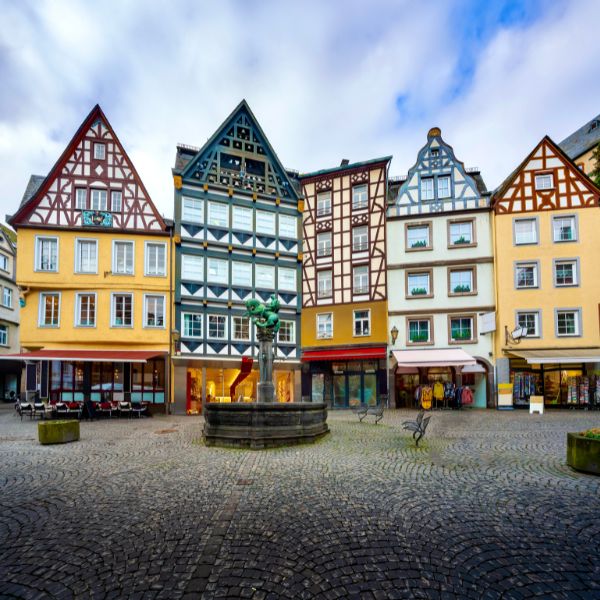
Jaywalk the Boardwalk
Stretching out from the Cochem city center are half-timbered houses loitering along its winding cobblestone streets in typically picturesque German fashion.
In as long as it takes to Google “Jaywalking in Germany” you’ll probably find yourself standing in the middle of the Mosel Promenade staring up at the Reichsburg Castle in the distance.
Mind the cars and bikes, and yes, jaywalking is illegal in Germany.
Cruise Control
As it was during its economic revitalization in the 18th century, Cochem is still serviced by a shipping trade today. That is, however, with merchant ships being replaced by river cruises moving at a slightly more meandering pace.
A variety of cruises are available along the Mosel River (or the Moselle, as it is known by its upriver arrival from France).
Enjoy a day trip in the sunshine or an evening river cruise with dinner, drinks, and entertainment.

Call of the Wild
Dust off your boots and get a few lunges in before taking on this one. Another unconventional way into Cochem is on foot via the Endert Valley - or as it’s also known, the Valley of the Wild Endert.
Between Ulmen and Cochem is a 12.5 mile hike that was voted Germany’s Most Beautiful Hiking Trail in 2019. The path follows the Endertbach steam along which were nearly thirty mills - many of them are now restored, though the days of processing flour and grain are long past.
If an unspoiled woodland surrounding the famous Rausch Waterfall and calming natural wonders does something for you, then this one is worth the trek. It’s recommended to start in Ulmen and catch a bus back from Cochem if you need to.
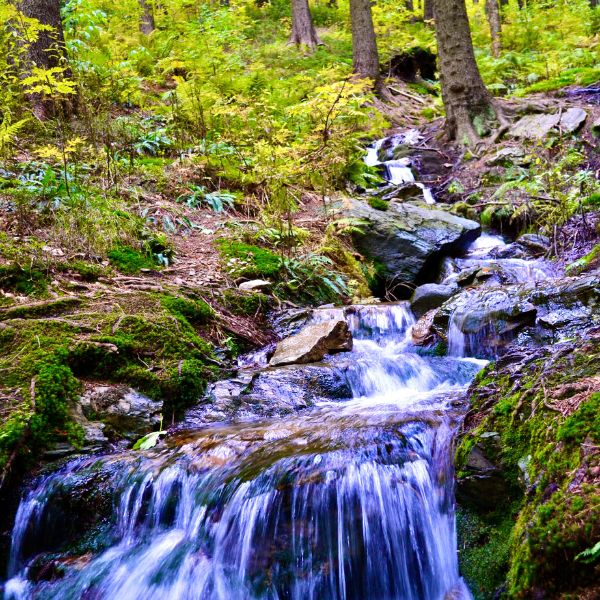
The Only Way is Down
For all the history of Cochem, half-timbered houses, and stunning hilltop castle among sloping vineyards, a secret government nuclear bunker fits into the town’s identity about as well as Beethoven at a rave.
But here we are, at a once-top-secret bunker in Cochem. From 1964–1988, the Federal Republic of Germany stored 15 billion Deutsche Marks under the residential area of Cochem-Cond.
During the Cold War, Germany was concerned about the influx of counterfeit Deutsche Marks, which could potentially collapse the economy, as well as the threat of nuclear war.
To future-proof itself against threats at the time, the Bundesbank Bunker was constructed under Cochem.
TOP TIP
Bundle up. The temperature in the bunker is a consistently balmy 12 degrees Celsius.
Guided tours will take you through the former vaults which contained enough money to kick-start the German economy in the event of national catastrophe.
The tours also cover what life would have been like in the event of a nuclear war and the systems in place to keep staff alive and survive the fallout. The surreality of being underground in such a complex given the unassuming facade from above is more than a little mind-bending.
These days, the building that camouflaged the entrance to the bunker is now a hotel (Hotel Vintage). The original building was an official training and recreation home for the Deutsche Bundesbank that was in use until 1993.
Chairway to Heaven
Overlooking Cochem and the Mosel Valley is the Pinnerberg. At the top is a viewpoint called Pinnerkreuz (Pinner’s Cross) which is named after a shepherd who died trying to stop his straying flock of sheep from falling off the edge.
Normally, whenever I recommend any sort of viewing platform, there are steps involved, and quite a few of them. As an outlier, taking advantage of the Sesselbahn (chair lift) will see you to the top in no time. As an added bonus, there is a terrace café with its own fairly remarkable views serving cakes, ice-cream, and regional dishes.
On a clear day, the viewing platform by Pinner’s Cross is second to none (if not by simple virtue of being the only one). This beautiful place is an experience that should definitely be at the top of your travel itinerary.
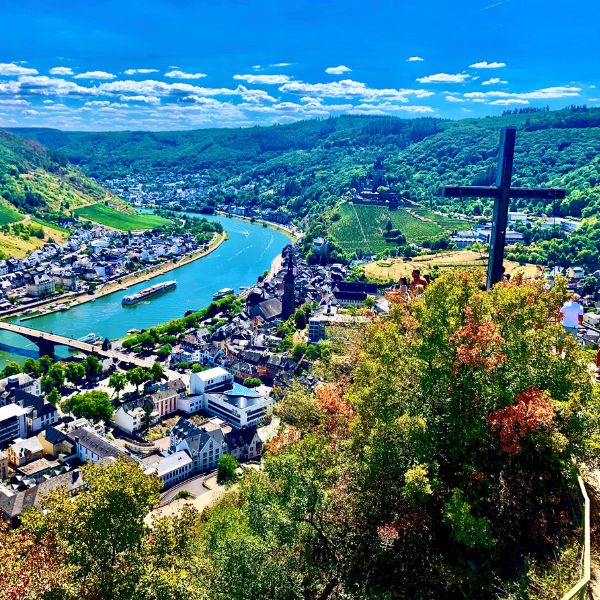
Day Trippers
Assuming you’ve had a good tour of Cochem and want to explore the countryside a bit, Burg Eltz (Eltz Castle) should be near the top of any day trip plans. A roughly thirty-minute drive from Cochem will take you to as close to a fairy tale castle outside Neuschwanstein as you can get.
INTERESTING FACT
The Burg Eltz featured on the 500-Deutsche Mark from 1961-1995.
Situated on what is essentially as massive oval rock in the Elzbach Valley, Burg Eltz could only ever be expanded vertically. Additions were made over the years by means of towers, spires, and multiple floors reaching skyward.
Notably, this castle is one of the few in Germany that has not been destroyed and rebuilt. In fact, excluding the Eltz Feud in the 14th century, the castle has not experienced any major conflict despite being on a major trade route. Also notable is that Burg Eltz is still retained by the Eltz family after nearly 900 years.
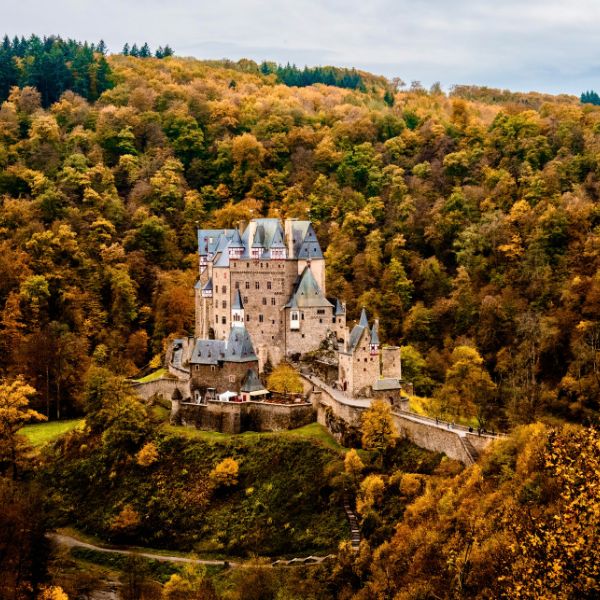
Hilltop Goth
Cochem’s major draw is the ever-slightly obvious Reichsburg Castle overlooking the town. The first mention of the castle dates back in 1051. Unlike Burg Eltz, Reichsburg suffered total destruction at the hands of troops under the orders of French King Louis XIV in 1688 during the Nine Years’ War.
TOP TIP
There is no parking at the castle, but the castle is only a 15-30 minute walk up from Cochem.
Speaking as someone who was a builder for a number of years, I can attest to the absolute devotion needed to demolish anything made of stone. So, with all fair dues paid to the French, it’s still a shame given the castle was left to ruin for nearly two hundred years. That was, until 1868, when a businessman from Berlin had the castle rebuilt.
And here’s where I lay in conflict, instead of rebuilding the original castle as it was, Louis Ravené incorporated a Neo-Gothic architectural style into the rebranding. In fairness, this was the done thing back then: both the style and the means of nobility and wealthy individuals to refurbish castles into family summer residences.
All that said, what Reichsburg offers today is very much worth a visit. Take a guided tour of the castle and soak up the fine interior decor and castle grounds. The castle also hosts multiple events throughout the year, and views both within and from the walls are still spectacular.
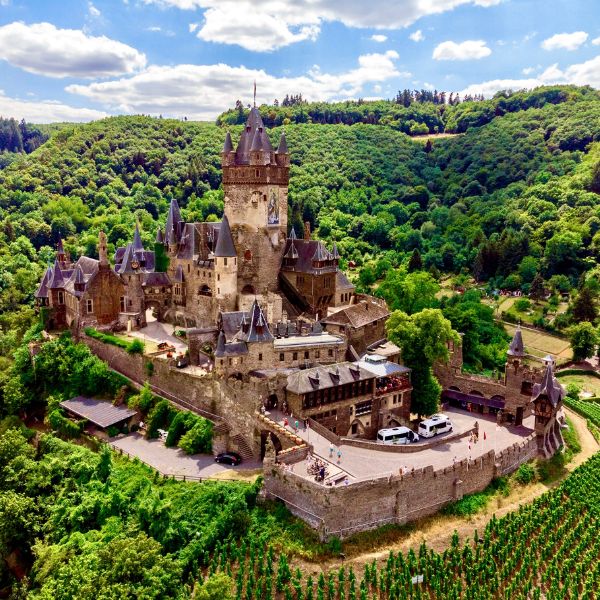
Cut the Mustard
TOP TIP
Can’t make it over? Order a range of their top-rated mustards via their website.
A while ago, I remember being surprised after discovering a Mustard Museum in Cologne. There’s a bit of déjà vu here as another one pops up in Cochem. As a mustard appreciationist, I fully back the notion that useful things often come in pairs: eyes, hands, wheels, wings…
Turns out, gourmet mustard is a veritable thing and there is a career to be made as a mustard miller. The origins of the Mustard Mill in Cochem dates back to 1810 and is one of the oldest mustard mills in existence. The original recipes are still the basis for its current run of mustard products. Guided tours are available where one can see the whole production.
Wine O’Clock
As I’ve subtly alluded to over the course of this post, Cochem is perhaps best known for its steep, sloping vineyards and as one of Germany’s top wine regions. In particular, the vineyards produce grapes for the globally infamous Riesling wine.
The near 60 degree gradient of the valley vineyards and enriched soil help to give the grapes a unique palette for use in wines with a light and slightly fruitier taste. Unique to the Mosel Valley are the slate slopes, which effectively store heat from the daytime sun and release it again at night.
Among the many varieties of grapes throughout the vineyards is the Elbling. This is an old grape variety found on the Upper Mosel and thought to have been cultivated here for nearly 2,000 years.
Also prevalent in Cochem and the surrounding areas, you will find no shortage of a wine tasting tour or two. Sampling the local wines is a great way to top off your visit to Cochem. Just be sure to leave some well-padded room in your luggage to bring a few bottles back.

Christmas Remission
Without fail, I’ve always finished my city summaries with a dive into the local Christmas Market scene. But I must digress, this might be my first wave of the white flag. Not to take anything away from Cochem, but this is one where visiting between late Spring to early Fall is best.
It might have been an ambitious desire to find a market in a town with just over 5,000 people. As a caveat, there are a few stalls offering food and drink while the festive decor will bring some merry cheer (though that may come from the white mulled wine – a Mosel-style glühwein).
The Reichsburg Castle also offers some festive Christmas events. That being said, I’d recommend a quick stop anyway if you’re already taking in the Koblenz or Trier markets.
General Consensus
Cochem is a lovely little town with a long history and atmosphere to match. It pairs well with wine and the stunning countryside, along with notes of river cruises. It’s a perfect place for beautiful scenery, and despite the size, there are plenty of wonderful things to do in Cochem.
This is an idyllic and peaceful retreat if you’re looking to take a breath and unwind from the intensity of larger cities. Good things, small packages.
When was Cochem founded?
When was Cochem founded?
1332 A.D.
What is the land area of Cochem?
What is the land area of Cochem?
8.19 square miles
What is the population of Cochem?
What is the population of Cochem?
5,199
What is the GPS location of Cochem?
What is the GPS location of Cochem?
What are the closest major cities to Cochem?
What are the closest major cities to Cochem?
55 miles to Cologne
67 miles to Frankfurt
76 miles to Düsseldorf
95 miles to Dortmund
131 miles to Stuttgart





